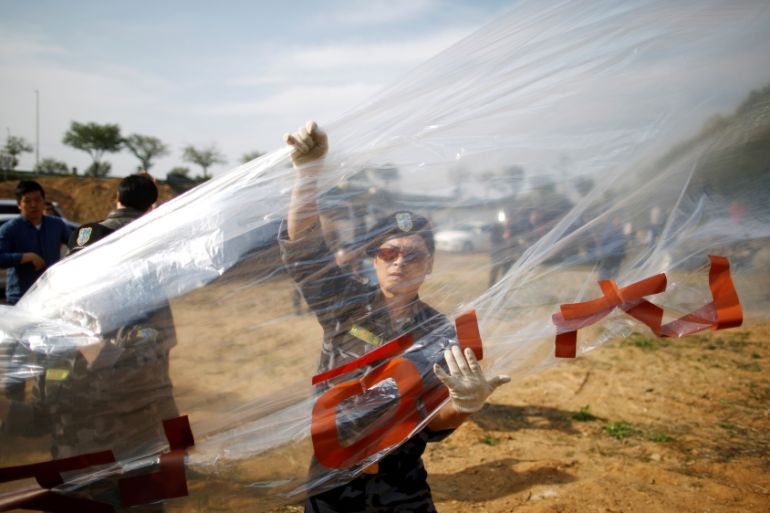How one North Korean defector sends ‘true news’ from the South
In part six of series on North Korean defectors, Al Jazeera speaks to Lee Min-bok, head of North Korea Balloon Group.

Seoul, South Korea – Around 31,000 North Koreans have defected to South Korea since the end of the Korean War in 1953.
Almost 71 percent of those defectors are female, most in their 20s and 30s.
Keep reading
list of 4 itemsWhy Egypt backed South Africa’s genocide case against Israel in the ICJ
US sanctions two RSF commanders as fighting escalates in Sudan’s Darfur
The Lost Souls of Syria – Part 1
Only a few take the most dangerous route through the Korean Demilitarized Zone that a North Korean soldier took late last year.
Most of North Koreans defect via the long and expensive journey that takes them into China after crossing the Yalu River.
The journey takes them to China’s southern border into Vietnam and Laos before they arrive in Thailand, from where they are often flown into South Korea.
Some even opt to go to the US, according to Liberty in North Korea, an NGO based in the US and South Korea.
But their arrival into South Korea does not signal an end to their worries and problems.
Part 1 – ‘Korean government doesn’t treat defectors as people’
Part 2 – ‘I wish I can go back to North Korea for a day’
Part 3 – North Korean defector describes life at home through cartoons
Part 4 – North Korean defector: ‘If you have money, you can do anything’
Part 5 – North Korean artist: ‘I would never go back home’
In part six of the series, Al Jazeera speaks to 58-year-old Lee Min-bok who is head of the North Korea Balloon Group and sends balloons across the border from the South.
“I come from a place where there was no radio or internet. Seventeen years ago, I saw a South Korean flyer and that’s when I decided to defect and do this from across the border.
“I left North Korea in 1990 and it took me five years to arrive in the South. I left my sisters and mother behind. I haven’t heard from them since then. I tried several times, but no luck.
“I found out that the South Korean government was sending balloons into the North and my involvement was limited to giving suggestions and opinions.
“After the inter-Korean summit in 2000, they stopped sending those flyers. In 2003, I developed my balloons and became the first civilian to do so.
“Through the balloons, I send over what I call true news to demystify the lie that the Korean War was instigated by South Korea and the USA and the lie that South Korea needs to be liberated from imperialists.
“I don’t have a group as such. There are one or two experts who fly the balloons and the rest are sponsors. In order to fly the balloons, you need a licence to transport gas, a station for the balloons and a vehicle that passes safety regulations.
“The exact location where the balloons are sent depends on the wind. Most are sent from the DMZ area during the summer. The last time we sent the balloon was in November 2017. The wind isn’t that good in the winter, so we are just planning our next round for now.
“We are able to track the balloons as the technology allows us to attach GPS and estimate the wind direction and volume. I heard from a defected soldier that the furthest a balloon reached was Ryanggang province which is in the northeast of North Korea.
“Because of my work, I’ve been subject to terror from the North Korea government. I was attacked with poisoned needles, so the South Korean government hired six bodyguards to be with me at all times and a CCTV everywhere I go.
“Now, I have a family here in South Korea – a wife and three children – and they help me send the balloons out.”
As told to Faras Ghani and Hae Ju Kang
![A balloon containing leaflets denouncing North Korean leader Kim Jong Un near the demilitarized zone separating the two Koreas in Paju, South Korea [Kim Hong-ji/Reuters]](/wp-content/uploads/2018/02/e7b2940906894fd9ab76934efebe1cf4_18.jpeg)